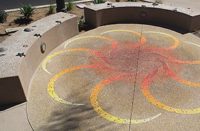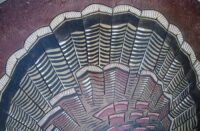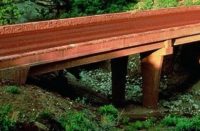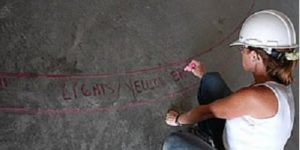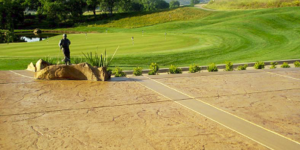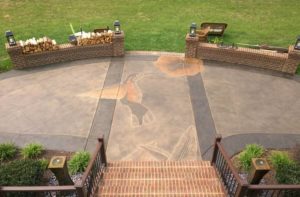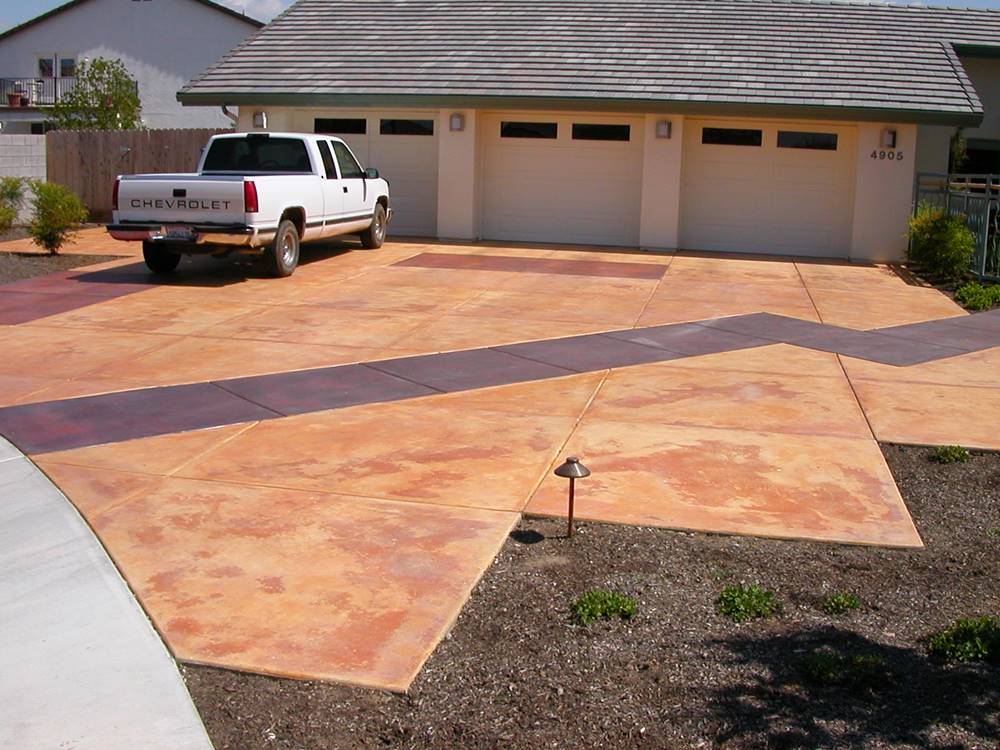
It really doesn’t surprise me. The move to take decorative concrete outdoors is a natural progression of people spending more time, well, outdoors. Our “hydration society” is into exercise, meditation, prayer and just outright healthy outdoor living that draws us to private outside sanctuaries.
Of all the different types of decorative concrete, outdoor concrete stains are the most affordable. They also require the least manpower. But this is an article on how your business can be sure to pick the right outdoor concrete stains to create the outdoor paradise your clients value the most. As you may have noticed, there are many new options available, and most deserve their place in this dynamic market.
There has certainly been some confusion, with myself included, on what product works best in which application. This is a great time to simplify the staining/coloring process, not only for you but for your clients as well. Think about this — if the staining process is confusing for us, the installers, can you imagine what it is like for the end user? The only thing the end user knows is that she wants a nice-looking project colored to her taste. This is best achieved when left in the hands of professionals. That is you, by the way.
Let’s take a look at what’s available for exterior staining and the pros and cons of each. After all is said, you will need to determine what is best for you and your business.

Notice how rain water beads up on the surface.
Acid Staining
Few will argue the fact that it all started with acid stains. Acid stains are a reactive coloring process that penetrates into the porous concrete surface. This is probably the most permanent of all coloring options but is usually limited to eight colors. Now, these colors can be blended, diluted, streaked and tweaked to create many coloring options. The acid stains will chemically react differently to each piece of concrete by evidence of final color. In other words, you can’t guarantee the exact color. If you are the type that loves a challenge, then acid staining is for you.
Pros:
Very durable connection with, and penetration into, the concrete canvas.
Inexpensive to purchase.
Same stain can be used indoors and out.
Gives a translucent appearance to the concrete surface, unlike painted or topical stains.
Extremely timeless-looking and old-world.
Cons:
Requires ongoing maintenance through resealing.
Limited colors, with some turning black from exposure to moisture.
Unpredictable when it comes to exact color.
Must be neutralized before sealing.
Stain is a toxic material that requires care when handling.
Looks different in exterior and interior projects.
Wet edge must be kept during installation, and some thicker stains may show brush marks.
Water-Based Acrylic Stain
These stains are nonreactive and will only penetrate into the surface when pores of the concrete are open. Strong prep work cleaning the concrete is a must. This stain type will offer many more colors to choose from and can be used inside or out. Water-based stains are growing in popularity but are not as durable in exterior applications as old-fashioned acid stain. I guess you can say this is the new and improved version of old-fashioned acid stain. Pick a good sealer to lock in stain and be sure to remind your clients of the importance of resealing.
Pros:
Very user-friendly. Nontoxic.
Many more color options than acid stains.
Will not blacken like acid stain.
Seems to be easier to build up or add color to color than with some other stain forms.
Practically endless color effects.
Less residue to clean up between staining and sealing.
Cons:
Not as durable in exterior applications as acid stain.
Will show the same variegated or translucent coloring as acid stain, although not as deep.
Tends to be more expensive.
Can look a little painted.
Sealer maintenance is a must.
Tinted Sealer
I’m throwing tinted sealer in under a stain article, but it is actually not a stain system at all. The reason to mention it as an option is because it deserves mentioning and has a solid place in this market. Both water-based and solvent-based sealers can be tinted but the solvent-based are best. The tint additive usually comes concentrated, is easily mixed with sealer and will look best when sprayed on. Many color options can be achieved, from translucent to solid. This is a nonreactive coloring system.
Tinted sealer is a great color system to use on jobs that have natural gray flatwork that stands out when new decorative concrete is installed close by. Tinting the sealer to a neutral color helps blend the hardscapes together. This coloring process is fairly simple because you are combining the coloring and sealing into one step. This is the least expensive form of exterior coloring short of sidewalk chalk.
Pros:
Very inexpensive to apply.
Many colors to choose from, and the stain can be built up to a solid color.
Easy to apply.
Helps to create a reseal market.
Cons:
Completely topical, with no reaction to concrete.
Requires sealer maintenance for the life of the project.
Some areas may want to bubble between coats when in direct sunlight.
Surface needs to be very clean and dry.
Do not overapply!
Polymer-Modified Water-Based Stain
I guess you can say this is the new guy on the block. My company is doing real-time testing on this product as I write this article, but right now I definitely believe this type of stain will be around for a while. This is a nonhazardous penetrating-type stain available in many colors. It can be applied solid or translucent and doesn’t always need a sealer to protect it. It contains no acid, no acrylic and no VOCs. I can’t wait to see the future on this one. I’m not breaking down the pros and cons on this type simply because it is so new to me.
What they have in common
Here is what all of the above have in common: Regardless of your stain or coloring choice, none will cover cracks or chips. Some existing stains may still be visible, although in a different final color. Prestained concrete must be unsealed, and I recommend testing the surface with a small amount of water to make sure the concrete is porous. Be sure to pressure-wash the surface so that pores are open and stain-ready. It is usually best to let the surface dry overnight before staining. The sealer used to lock in the color or stain will not like water, so be sure to control sprinklers and potted plants.
Concrete should also have been left to cure for a minimum of 30 days before staining.
A final note about staining exterior work: I rarely used acid stains, solely because of their unpredictability. I also sense most states will institute special disposal requirements in the near future.
In any case, there is no doubt outdoor concrete stains is a growing market and will continue to grow for some time. Good luck and let me know how it goes.
Questions from Readers
Question
I am having a lake dock built and the floor is going to be 24″ X 24″ concrete panels. I am concerned that leaving them natural over time the look will become undesirable with dirt, stains, etc. Which outdoor concrete stains would you recommend for this application?
Answer from Concrete Decor
I will start by saying that slip resistance is an important element in the concrete sealing process. The best way to ensure this is to use a penetrating sealer. We offer two types of penetrating sealer products via the Concrete Decor Store, water-based and solvent-based sealers. These products are not film-forming so you will still feel the concrete texture underfoot. Solvent-based sealers will darken the concrete which is often referred to as a color enhancer. Water-based sealers will not change the color of the concrete.
You can apply these products with a pump sprayer and back-roll them with a 1/2″ roller. Multiple thin coats is always better than one heavy coat. You will also enjoy years of maintenance-free concrete when the sealer is properly applied.
